This site uses affiliate links, meaning that if you make a purchase through our links, we may earn an affiliate commission.
Embark on a remarkable journey from the vibrant city of Cusco to Ollantaytambo. Nestled in the Sacred Valley of the Incas, Ollantaytambo is a well-preserved archaeological site that showcases the architectural prowess of the Incas, with intricate stone terraces, ceremonial temples, and the awe-inspiring Sun Temple.
Beyond its historical allure, Ollantaytambo is blessed with natural beauty. The majestic mountains and the meandering Urubamba River create a picturesque backdrop.
From the moment you set foot in the town of Ollantaytambo, you will be transported to a bygone era. The town’s cobblestone streets, traditional Inca and colonial architecture, and vibrant marketplaces set the stage for an unforgettable exploration.
But it is the magnificent archaeological site that truly steals the show. So, get ready to discover 15 extraordinary wonders of Ollantaytambo.
GOOD TO KNOW: If you are starting your Peru adventure in Lima, then make sure to read 22 Expert Lima Tips for First-Time Visitors (Unlock Lima’s Treasures)
- 1. Cusco to Ollantaytambo: Transportation Options
- 2. Accommodation Options in Ollantaytambo: 4 Best Places to Stay
- 3. Explore Ollantaytambo Town
- 4. Map of Ollantaytambo Archaeological Site
- 5. Discover 15 Fascinating Things at Ollantaytambo Archaeological Site
-
- 5.1. Marvel at the Terraces
- 5.2. Admire Wall of 10 Niches and Sun Gate
- 5.3. Visit Pre-Inca Sector
- 5.4. Explore Temple of the Sun
- 5.5. Admire the Temple of Condor
- 5.6. Visit the Intihuatana
- 5.7. Check out the Control/Military Sector
- 5.8. Explore Water Temple and Ceremonial Fountains
- 5.9. Marvel ay the Bath of the Ñusta
- 5.10. Decode the Myth of the Llama-Shaped Site
- 5.11. Uncover the Enigma of the Face of Viracocha on Pinkuylluna Mountain
- 5.12. Check out the Design of Storehouses Pinkuylluna Mountain
- 5.13. Discover the Profile of an Inca Warrior Face on Pinkuylluna Mountain
- 5.14. Explore the Sacred Symbol of Chakana - The Andean Cross - in Ollantaytambo's Ruins
- 5.15. Unveil the Meaning of the Name Ollantaytambo
- 6. Intrepid Scout's Tips for Visiting Ollantaytambo
Cusco to Ollantaytambo: Transportation Options
To get from Cusco to Ollantaytambo, you have several transportation options available. Here are the most common ways to travel between these two destinations:
- By Train:
One of the most popular and scenic ways to travel from Cusco to Ollantaytambo is by train.
There are two main train operators that offer services from Cusco to Ollantaytambo: PeruRail and Inca Rail. Both companies provide comfortable and scenic train rides through the Sacred Valley.
The train departs from the Poroy Station, located about 20 minutes outside of Cusco.
PRO TIP: Most train services do not depart directly from Cusco’s main train station, San Pedro, so it is important to plan accordingly and arrange transportation to Poroy.
The train routes from Cusco to Ollantaytambo pass through the beautiful Sacred Valley, and you will get to enjoy stunning views of the surrounding mountains, valleys, and agricultural terraces.
Both PeruRail and Inca Rail offer different classes of service to cater to various preferences and budgets. They typically include:
Expedition/Voyager Class: This is the standard class, offering comfortable seating, large windows, and onboard services such as snacks and beverages for purchase.
Vistadome Class: This class provides panoramic windows and glass ceilings, allowing passengers to immerse themselves in the breathtaking landscapes. It often includes additional amenities, such as snacks and entertainment.
Executive/First Class: This is the premium class, offering extra comfort and more spacious seating arrangements. It may include additional amenities like gourmet meals, beverages, and access to lounge areas.
The train journey from Cusco to Ollantaytambo typically takes around 1.5 to 2 hours, depending on the train service and any stops along the way.
PRO TIP: It is highly recommended to book your train tickets in advance, especially during peak travel seasons. Tickets can be purchased directly from the train operators’ websites or through authorized travel agencies.
The train will arrive at the Ollantaytambo Train Station, located in the town of Ollantaytambo. From there, you can easily explore the town’s archaeological site, visit local attractions, or continue your journey to Machu Picchu or hike the Inca Trail.
- By Bus or Colectivo
There are two minibus routes from Cusco, each departing from a different location. At Puente Grau, minibusses leave via Chinchero for Urubamba, the fastest route (one hour). At Puputi, minibusses leave for Urubamba via Pisac (1.5 to two hours).
In Urubamba, further buses and other vehicles are available for the 30-minute run to Ollantaytambo.
Direct buses to Ollantaytambo from Cusco are harder to come by, and you may end up waiting far longer for one.
From Puente Grau there are less-frequent colectivos (shared taxis, that leave when full with four passengers) that do journey the whole way to Ollantaytambo from Cusco. These run on demand, and so sometimes they will wait in Urubamba for more passengers even if they say in Cusco that they run directly to Ollantaytambo.
- Private Transfer:
If you prefer a more personalized and convenient option, you can hire a private transfer or taxi to take you from Cusco to Ollantaytambo. This allows for flexibility in terms of departure time and the possibility of making stops along the way.
Accommodation Options in Ollantaytambo: 4 Best Places to Stay
When visiting Ollantaytambo, there are several excellent places to stay that offer comfortable accommodations and convenient access to the archaeological site and other attractions. Here are some of the best places to consider:
- El Albergue Ollantaytambo
Located just steps away from the train station, El Albergue offers cozy and charming rooms with a rustic atmosphere. The property also features a restaurant and café with organic and farm-to-table cuisine.
- Sol Ollantay Exclusive Hotel
Located in the heart of Ollantaytambo, Sol Ollantay Exclusive Hotel offers a great escape if you are seeking comfort and convenience. With its prime location near the main attractions and the train station, the hotel provides easy access to the wonders of Ollantaytambo. The rooms are spacious and well-appointed. Indulge in the culinary delights of the on-site restaurant, offering a delectable selection of local and international dishes. The rooftop terrace offers stunning views of Ollantaytambo and the surrounding mountains, perfect for unwinding after a day of exploration.
- Sol Natura Hotel
Surrounded by lush greenery and majestic mountains, this charming Sol Natura Hotel provides a peaceful retreat away from the hustle and bustle of the town. The cozy and comfortable rooms are thoughtfully designed, providing a cozy sanctuary where you can relax and rejuvenate. Start your day with a delicious breakfast featuring local ingredients, fueling you for the day’s adventures. The hotel’s beautiful garden and outdoor seating areas offer a tranquil space to unwind and soak in the breathtaking views. The friendly and attentive staff are always on hand to assist with any requests and provide helpful recommendations for exploring the area.
- Apu Lodge
Apu Lodge is a charming and welcoming accommodation nestled in the heart of Ollantaytambo. With its comfortable rooms adorned with traditional Andean textiles, stunning mountain views, and a commitment to sustainability and community engagement, Apu Lodge offers a unique and authentic experience. Unwind in the peaceful courtyard adorned with vibrant flowers. The friendly staff will ensure you have a memorable stay, providing assistance and recommendations for local dining and activities.
Explore Ollantaytambo Town
Begin your journey in the picturesque town of Ollantaytambo. Take a stroll through the narrow cobblestone streets lined with well-preserved Inca and colonial architecture.
Explore the central plaza, Plaza de Armas, which is surrounded by shops, restaurants, and cafes.
Ollantaytambo is known for its vibrant marketplaces where you can find traditional handicrafts, textiles, and locally sourced produce.
Do not miss the opportunity to visit the Iglesia de San Pedro, a colonial-era church that stands as a testament to the town’s colonial heritage.
Ollantaytambo has an intricate water channel system, which was engineered by the Incas for irrigation and agricultural purposes. As you walk through the town, you will come across these stone channels that still carry water, demonstrating the advanced engineering skills of the Incas.
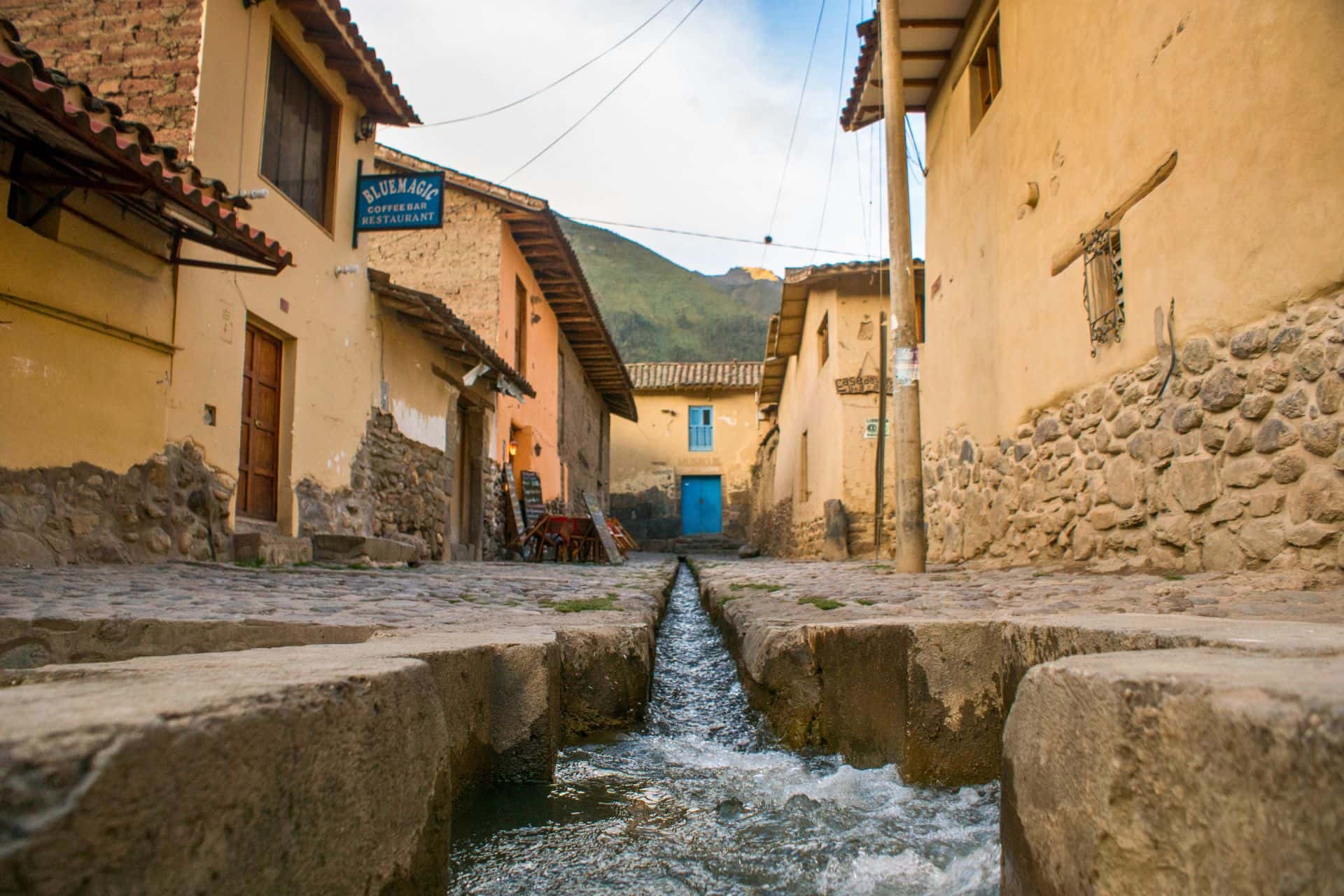
Narrow Streets of Ollantaytambo Town / Cusco to Ollantaytambo: 15 Things to See
Map of Ollantaytambo Archaeological Site

Map of Ollantaytambo Archaeological Site / Image Credit: Instituto Nacional de Cultura
Discover 15 Fascinating Things at Ollantaytambo Archaeological Site
The highlight of Ollantaytambo is undoubtedly its awe-inspiring archaeological site. Ollantaytambo holds historical and cultural significance, as it served as both a religious and administrative center during the Inca Empire. It was also a strategic location for trade and defense.
Here are some interesting facts about Ollantaytambo:
- Around the mid-15th century, the Inca emperor Pachacuti conquered the town of Ollantaytambo and incorporated it and its surrounding regions into his personal estate.
- Under Pachacuti’s ownership, the town of Ollantaytambo went through an extensive rebuilding and improving process starting with the construction of elaborate terraces and a superior irrigation system.
- Eventually, Pachacuti started to build his royal retreat on the hill overlooking the town of Ollantaytambo and the Urubamba Valley.
- Pachacutec used the Colla people from Lake Titicaca to quarry the massive stones from the other side of the valley located about 4 km (2.5 miles) away for his royal estate. Interestingly, the Colla people are said to have deserted halfway through the work. It explains why there are so many unfinished blocks lying about the site.
- Ollantaytambo has a very strategic location. It is surrounded by mountains and the main access routes run along the Urubamba Valley.
- In 1537, after Manco Inca Yupanqui had lost the battle at Sacsayhuaman, he retreated first to Calca and then to Ollantaytambo.
GOOD TO KNOW: Manco Inca Yupanqui (1516-1544) was an Inca Prince and later a puppet ruler of the Inca Empire under the Spanish.
Initially, Manco Inca worked with the Spanish who had put him on the throne of the Inca Empire. Yet, he later came to realize that the Spanish would usurp the Empire and he fought against them.
He spent his last few years in open rebellion against the Spanish. He was eventually treacherously murdered by Spaniards to whom he had given sanctuary.
- Ollantaytambo, specifically, Temple Hill itself with its high terraces provided a line of defense against invaders. It became the stronghold of Manco Inca during the Spanish conquest of Peru.
- Hernando Pizarro (Francisco’s half-brother) pursued Manco Inca with a force of 70 Spanish cavalry and hundreds of Spanish and indigenous foot soldiers.
- Manco Inca prepared an ingenious and unexpected defense. When the Spanish troops arrived at the base of Ollantaytambo, Manco rained arrows, spears, boulders, and slingshots down onto the attackers.
- More importantly, he opened up channels from the Rio Patacancha which flooded the ground behind the Spanish. This sent the horses of the Spanish into panicked disarray and forced them to retreat. The battle would prove to be the most important battle ever won by the Inca against the conquistador.
Marvel at the Terraces
The terraces in Ollantaytambo are remarkable feats of Inca engineering and played a crucial role in the agricultural practices of the time.
Here is more information about the terraces:
- The terraces were primarily used for agricultural purposes. They allowed the Incas to cultivate crops such as corn, quinoa, potatoes, and various vegetables in the mountainous terrain. The terraces created flat, level surfaces that helped retain water and prevent erosion, enabling successful farming in a challenging environment.
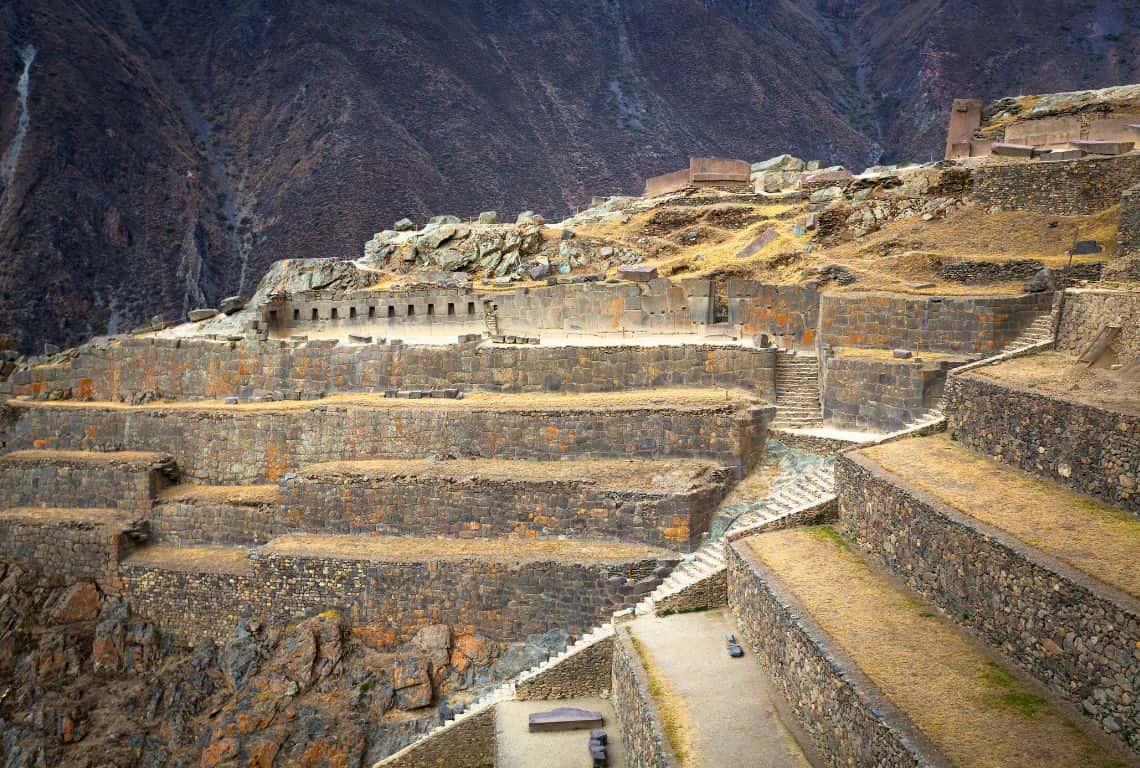
Terraces at Ollantaytambo / Cusco to Ollantaytambo: 15 Things to See
- The construction of the terraces is a testament to the Inca’s mastery of stone masonry. The walls of the terraces were built with precise craftsmanship, using irregularly shaped stones that fit tightly together without the need for mortar. The precision of the construction is evident in the seamless joints and the ability of the terraces to withstand the test of time.
- An intricate system of channels and irrigation canals was integrated into the terraces. These channels directed water from nearby rivers and springs to irrigate the crops on the terraces. The Incas developed sophisticated methods to control the flow and distribution of water, ensuring the optimal growth of their agricultural produce.
- The terraces created microclimates that allowed the Incas to cultivate a variety of crops at different altitudes. Each terrace level offered unique environmental conditions, including temperature, sunlight exposure, and moisture levels. This strategic use of microclimates contributed to the diversity and abundance of agricultural production in Ollantaytambo.
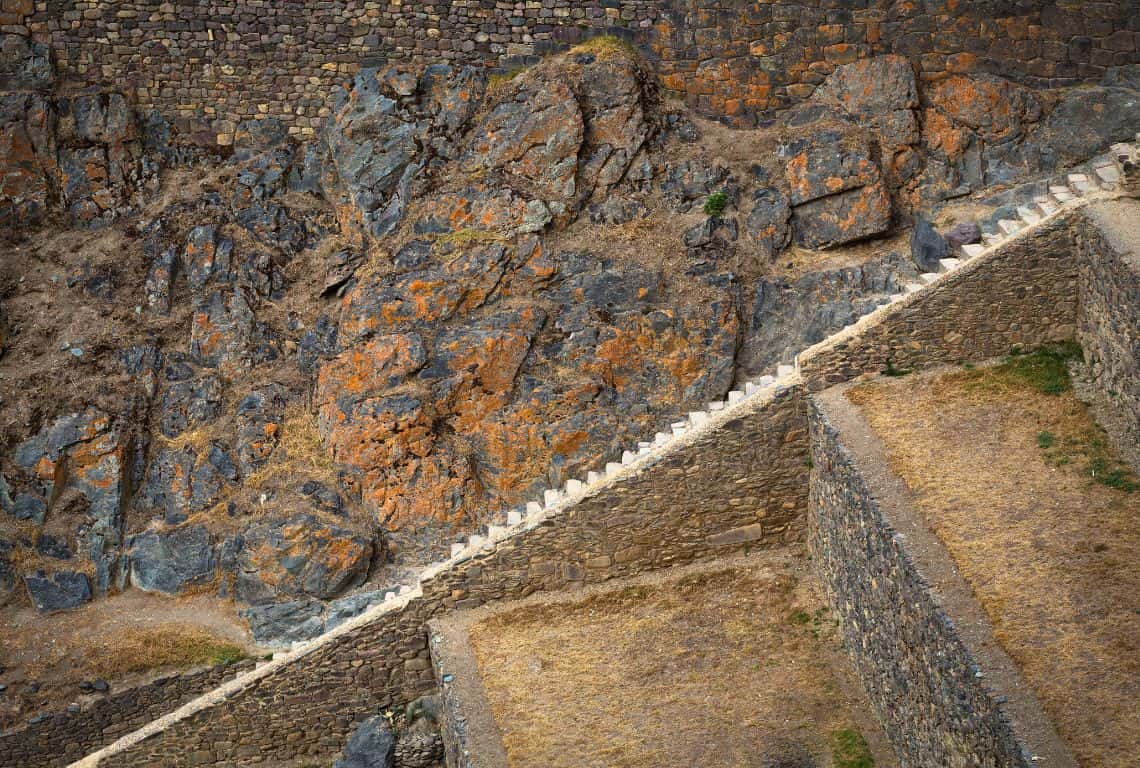
Terraces at Ollantaytambo / Cusco to Ollantaytambo: 15 Things to See
- The terraces played a significant role in the Inca society, both socially and economically. They provided a sustainable food source, supporting the local population and the empire’s expansive network of trade and commerce. The surplus crops from the terraces also contributed to the Inca’s ability to sustain large armies and engage in long-distance trade.
GOOD TO KNOW: The terraces in Ollantaytambo have been restored and maintained to showcase their original grandeur. You can walk along the terraces, observe the precision stonework, and marvel at the scale and ingenuity of the agricultural system.
PRO TIP: As you traverse the terraces, take in the breathtaking views of the surrounding mountains and the Urubamba River meandering through the valley.
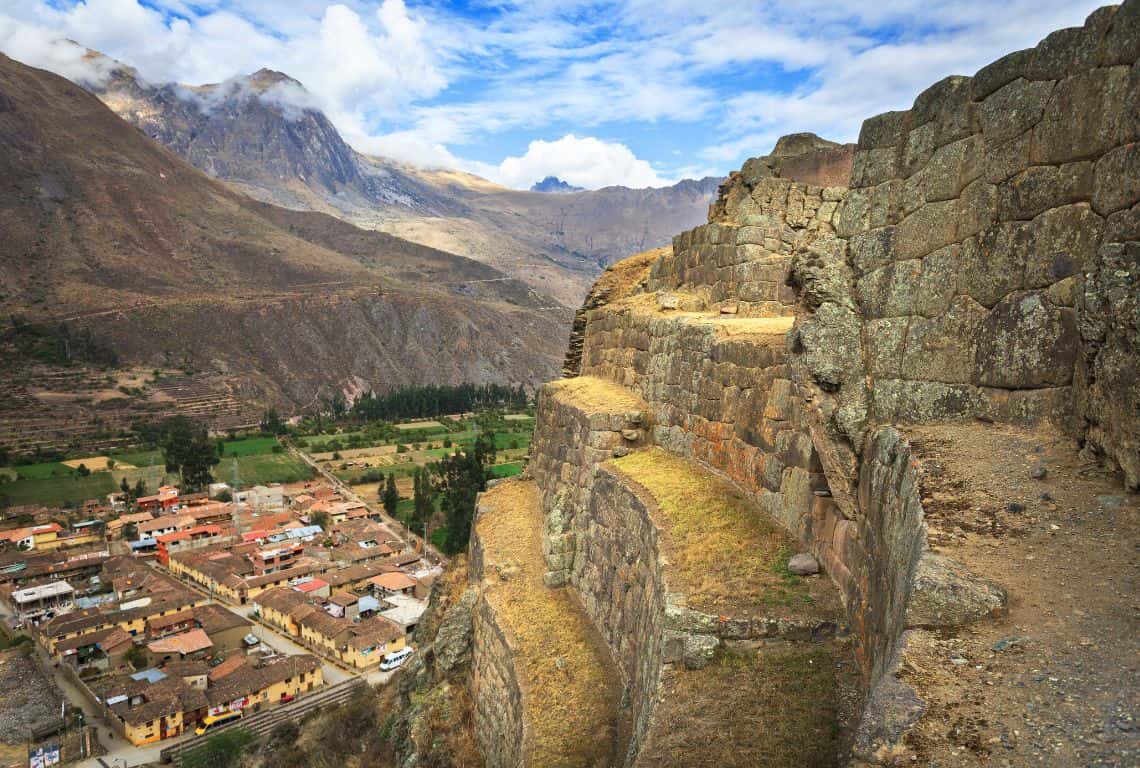
View of Ollantaytambo Town / Cusco to Ollantaytambo: 15 Things to See
Admire Wall of 10 Niches and Sun Gate
The Wall of 10 Niches and the Sun Gate are two fascinating features of the Ollantaytambo archaeological site.
- Wall of 10 Niches
Located in the upper part of the archaeological site, the Wall of 10 Niches is an impressive structure that showcases the Inca’s expert stonework. The wall consists of ten trapezoidal niches carved into a massive stone block. Each niche is precisely shaped and polished, displaying the Inca’s advanced knowledge of stone carving techniques. The purpose of these niches is still uncertain, but it is believed that they may have served as decorative elements or housed sacred objects.
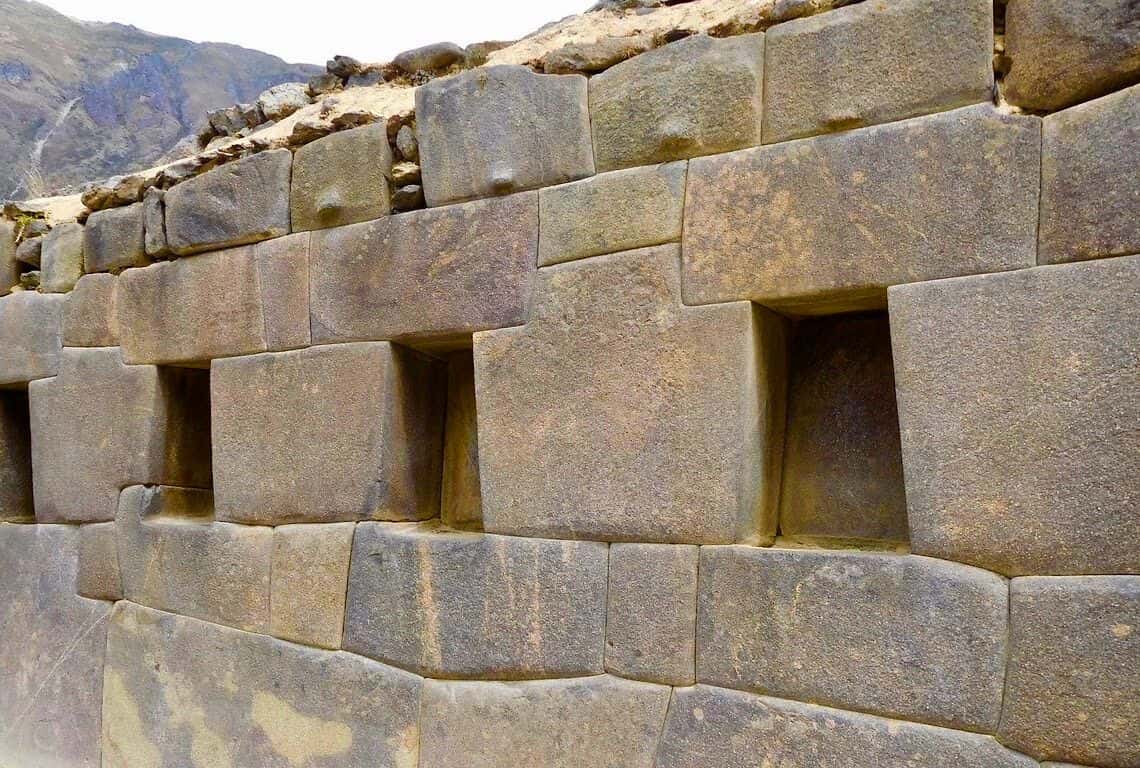
Wall of Ten Niches / Cusco to Ollantaytambo: 15 Things to See
- Sun Gate (Intipunku)
The Sun Gate is an impressive stone structure consisting of two massive stone pillars supporting a lintel, creating a gateway-like structure. It is believed that the Incas used the Sun Gate as an astronomical observatory, where they would observe and predict celestial events, particularly those related to the sun.
The alignment of the Sun Gate with the solstice events highlights the Inca’s deep connection with nature and their sophisticated understanding of celestial movements.
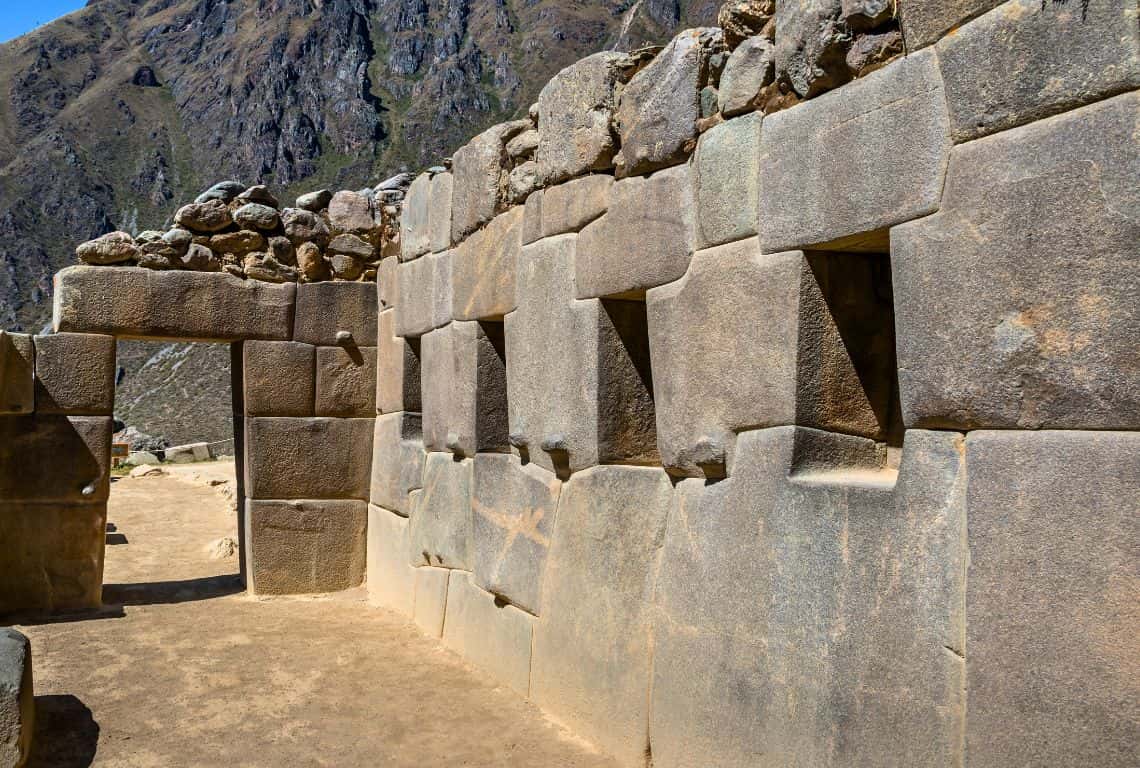
Sun Gate / Cusco to Ollantaytambo: 15 Things to See
Visit Pre-Inca Sector
Within the Ollantaytambo archaeological site, there is a fascinating area known as the Pre-Inca Sector. This section showcases the remnants of a pre-Inca civilization that predates the Inca Empire.
- Historical Significance: The Pre-Inca Sector at Ollantaytambo provides evidence of human occupation in the area before the rise of the Inca civilization. The structures found here are believed to belong to the earlier inhabitants, possibly the indigenous peoples who inhabited the region before the Inca Empire’s expansion.
- Architectural Features: The Pre-Inca Sector features unique architectural elements distinct from the Inca construction style. The structures are characterized by their rougher stone masonry and less precise craftsmanship compared to the Inca structures. This distinction highlights the transition and evolution of architectural techniques and styles over time.
- Petroglyphs: The Pre-Inca Sector also showcases a collection of petroglyphs, which are ancient rock carvings. These carvings depict various symbols, animals, and geometric shapes and provide insights into the artistic expressions and cultural beliefs of the pre-Inca inhabitants.
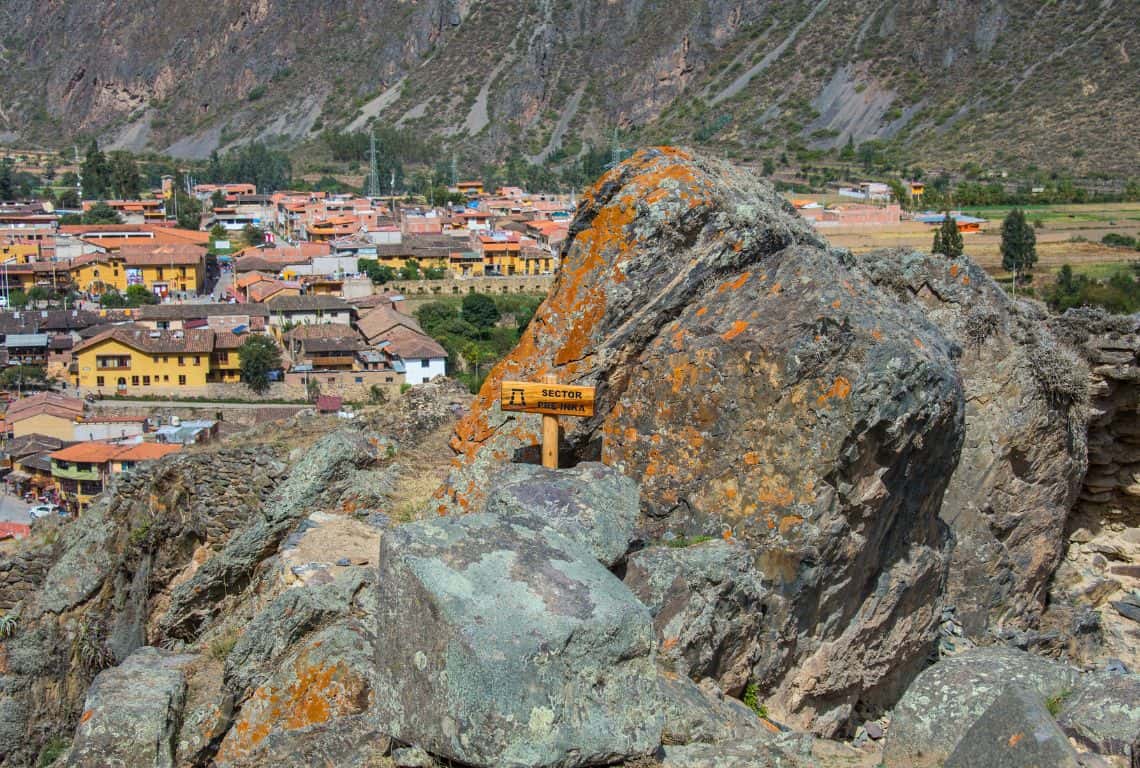
Pre-Inca Sector / Cusco to Ollantaytambo: 15 Things to See
Explore Temple of the Sun
The Temple of the Sun (Templo del Sol) is one of the most significant structures within the Ollantaytambo archaeological site. It holds great historical and cultural importance, representing the advanced architectural and engineering skills of the Inca civilization.
Here’s what you need to know about the Temple of the Sun:
- The Temple of the Sun is a massive stone structure that stands as a testament to the Inca’s exceptional stone-cutting and construction techniques. The temple is built on a hillside, overlooking the town of Ollantaytambo and offering breathtaking views of the surrounding valley and mountains.

Temple of the Sun / Cusco to Ollantaytambo: 15 Fascinating Things to Discover
- The Temple of the Sun held both religious and ceremonial significance for the Incas. It is believed to have been dedicated to the worship of Inti, the sun god, who was highly revered in Inca culture. The temple’s strategic positioning allowed for the observation of celestial events, particularly the sun’s movements during solstices and equinoxes.
- The Temple of the Sun exhibits remarkable craftsmanship and precision. The structure consists of massive stone blocks called the Wall of Six Monoliths. They are meticulously cut and fitted together without the use of mortar. The intricate stonework and precise angles showcase the Inca’s mastery of stone carving and their ability to create durable and visually stunning structures.
GOOD TO KNOW: Interestingly, the blocks are united by slim spacer stones. It is an unusual feature in Inca construction that has long puzzled the archaeologists.
- The Temple of the Sun’s design and alignment with the sun’s movements indicate its importance in Inca astronomy. During significant solar events, such as the winter solstice, the rising sun would align perfectly with specific points in the temple, casting light through carefully placed openings and illuminating designated areas.
Admire the Temple of Condor
As you explore the complex, you will come across the Temple of Condor, a fascinating rock formation that resembles a condor, a sacred bird in Inca culture.
The Temple of the Condor showcases remarkable stone carving and masonry techniques. The shape of the rock formation closely resembles the wingspan of a condor, with the head and neck carved at the front. The entire structure is intricately crafted, capturing the essence and grace of this revered bird.
The Incas held the condor in high esteem, considering it a symbol of power, freedom, and connection to the spiritual world. They believed that the condor had a special connection to the gods and the heavens. As a result, the Temple of the Condor was a significant site for ceremonial and religious practices.
Visit the Intihuatana
The Intihuatana is a significant feature found within the Ollantaytambo archaeological site.
It is an ancient stone pillar that served as a solar clock or sundial for the Inca civilization. The term “Intihuatana” translates to “hitching post of the sun” or “where the sun is tied” in the Quechua language.
The Intihuatana stone pillar is strategically positioned to align with the movement of the sun during solstices, equinoxes, and other important astronomical events. The Inca people used it to observe and track the changing seasons, which helped them determine the most suitable times for agricultural activities and religious ceremonies.
Check out the Control/Military Sector
The Control/Military Sector is an important area within the Ollantaytambo archaeological site.
This sector served as a strategic and defensive area during the Inca era. It was primarily used for military purposes, controlling access to the site and overseeing the surrounding landscape.
The Control/Military Sector provided a vantage point for monitoring the movements of people, ensuring the security of the site, and acting as a lookout for potential threats.
Explore Water Temple and Ceremonial Fountains
The Water Temple and Ceremonial Fountains are located in the lower terraces section of the site. They hold cultural and ceremonial importance in the Inca civilization.
- The Water Temple, also known as the Templo del Agua, was a sacred space dedicated to the worship and reverence of water, an essential element in Inca culture. The temple features intricate stone channels, canals, and fountains that were used for ceremonial rituals and agricultural purposes. Water was considered a vital resource for the cultivation of crops and the overall well-being of the community.
- The ceremonial fountains, found within the same area, were integral to the religious and ceremonial practices of the Inca civilization. These fountains were used for rituals, purification ceremonies, and possibly as part of offerings to the gods. The intricate stone carvings and arrangements in the fountains showcase the artistic and architectural capabilities of the Incas.
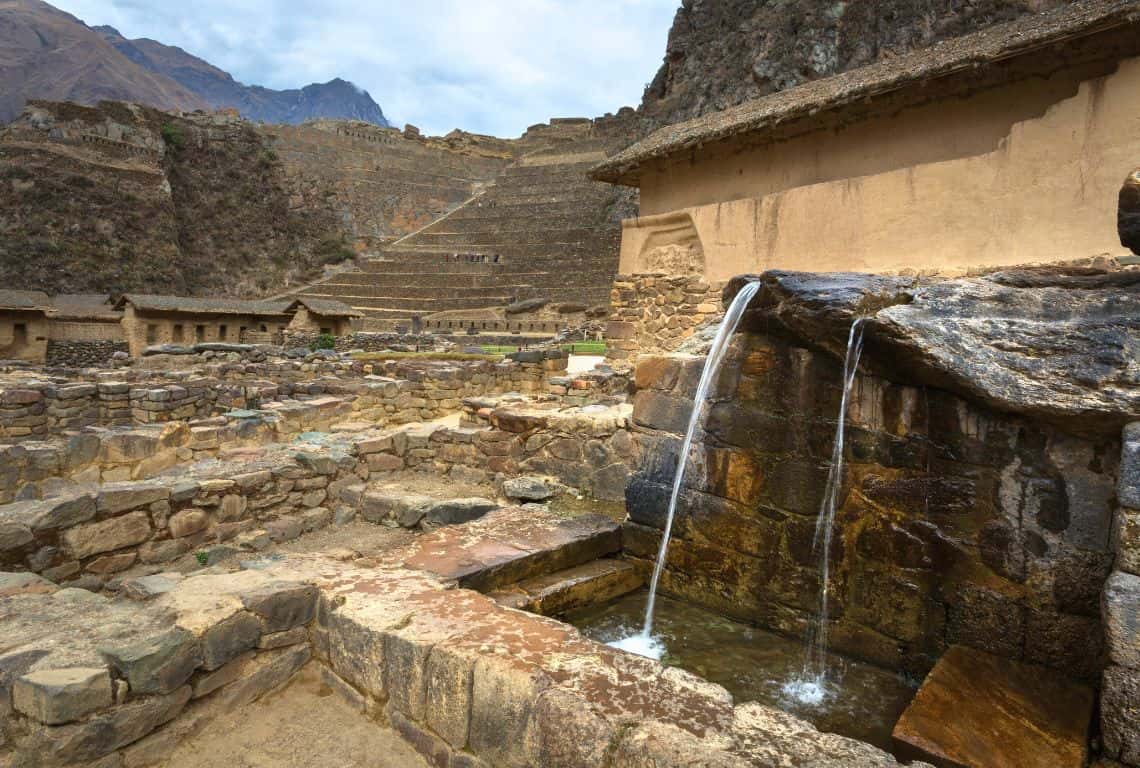
Fountains at Ollantaytambo / Cusco to Ollantaytambo: 15 Things to See
Marvel ay the Bath of the Ñusta
The Bath of the Ñusta, also known as Baños del Ñusta is a complex of stone baths believed to have been used for ceremonial and ritualistic purposes by the Inca elite, particularly the women of the royal family.
Located in the western part of the archaeological site, the Bath of the Ñusta features a series of rectangular stone structures filled with water.
The baths are constructed with precise stonework and exhibit sophisticated hydraulic engineering. The water was channeled from nearby springs into the baths, providing a constant flow for bathing and ceremonial cleansing.
The site offers a glimpse into the luxurious lifestyle of the Inca nobility, as well as their dedication to spiritual practices. It is believed that these baths were used for purification rituals and served as a sacred space for the Ñusta (princesses) to connect with nature and the divine.
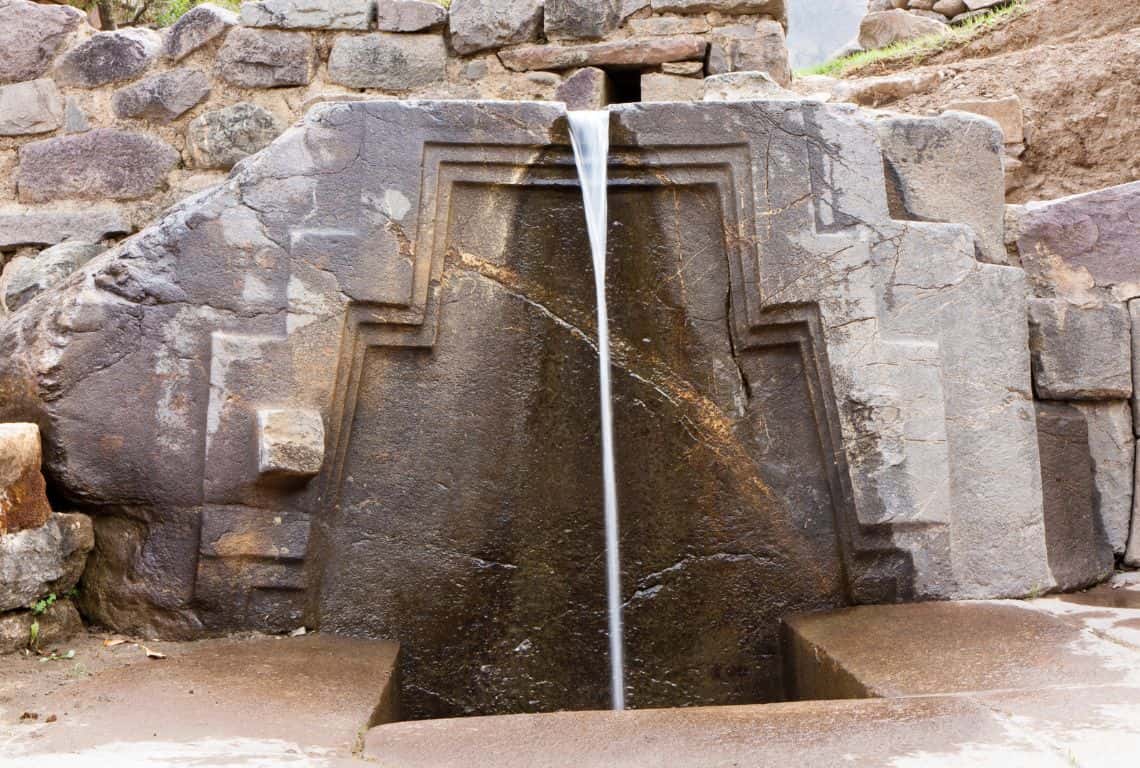
Bath of the Ñusta / Cusco to Ollantaytambo: 15 Things to See
Decode the Myth of the Llama-Shaped Site
Ollantaytambo is renowned for its impressive architectural design and layout. While it is commonly believed that Ollantaytambo was built in the shape of a llama, this notion is a subject of debate among historians and archaeologists.
Some interpretations suggest that the layout of the town and its terraces resembles the silhouette of a llama, a significant animal in Inca culture symbolizing strength, agility, and fertility. According to this theory, the terraced hillsides represent the body of the llama, while the stone structures on top form the head and neck.
However, it is important to note that not all experts agree with this interpretation. The arrangement of structures and terraces at Ollantaytambo may have been influenced by practical considerations such as optimizing agricultural productivity, water management, and defense strategies, rather than a deliberate attempt to mimic the shape of a llama.
Uncover the Enigma of the Face of Viracocha on Pinkuylluna Mountain
Perched on the slopes of Pinkuylluna Mountain in Ollantaytambo (opposite side of the archaeological site), lies a fascinating and mysterious sight: the Face of Viracocha. This natural formation on the mountainside resembles a human face, with distinct features and an enigmatic expression.
- The Face of Viracocha holds deep cultural and historical significance. Viracocha is an important deity in Inca mythology, considered the creator of all things and the supreme god. The face is believed to be a representation of this powerful deity, and its presence in Ollantaytambo adds to the mystical allure of the site.
- To catch a glimpse of the Face of Viracocha, you can embark on a moderate hike up Pinkuylluna Mountain. As you ascend the trail, surrounded by stunning Andean landscapes, keep an eye out for the distinct rock formation. The face appears naturally carved into the mountain, with its features seemingly etched by time and natural forces.
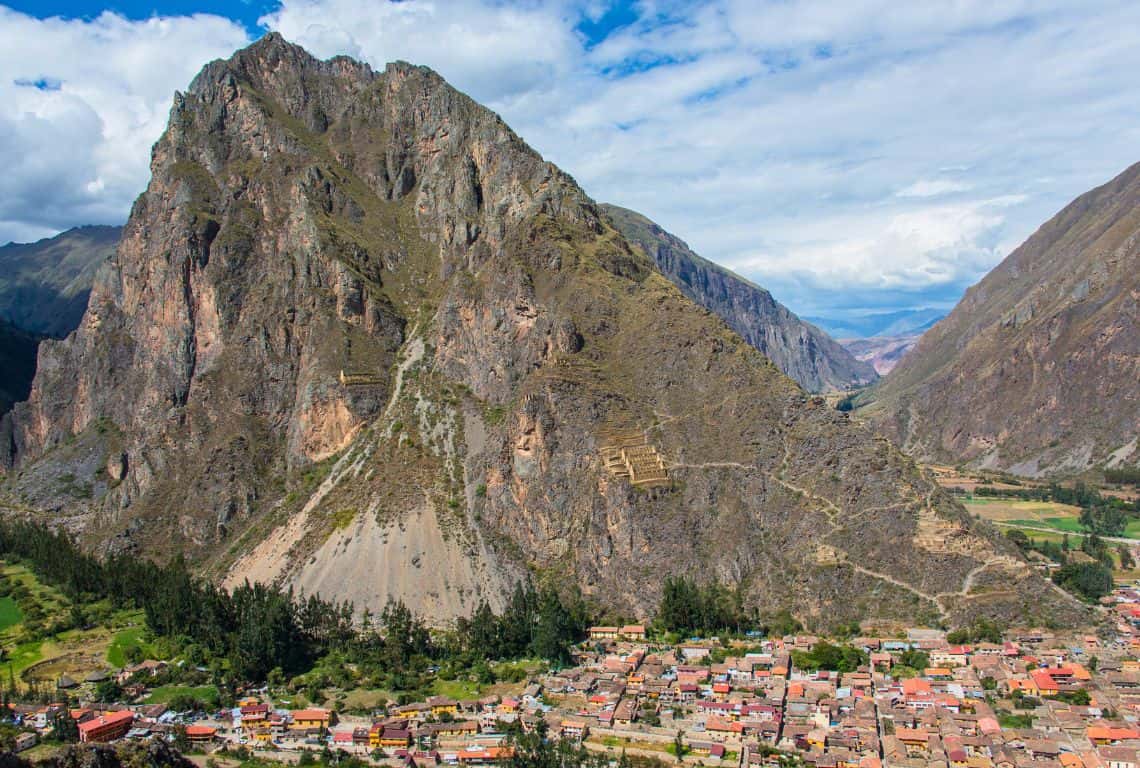
Face of Viracocha on Pinkuylluna Mountain / Cusco to Ollantaytambo: 15 Things to See
Check out the Design of Storehouses Pinkuylluna Mountain
The storehouses in Ollantaytambo, known as “colcas,” were an essential part of the Inca civilization’s sophisticated agricultural and economic system.
- The storehouses were strategically built at higher elevations to take advantage of the cooler temperatures and ensure proper storage of agricultural products such as maize (corn), potatoes, quinoa, and other crops.
- The Inca people developed advanced preservation techniques to maintain the quality and longevity of their stored goods. They carefully controlled humidity levels, ventilation, and temperature within the colcas to prevent spoilage and pests.
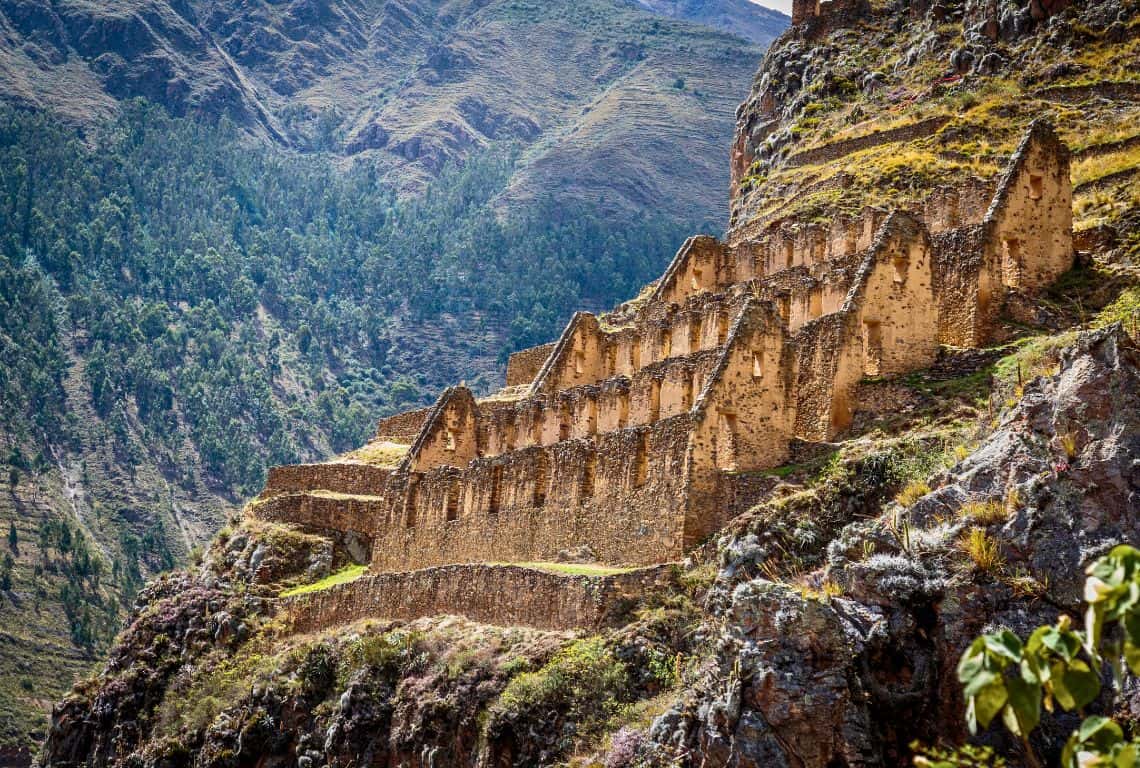
Storehouses / Cusco to Ollantaytambo: 15 Things to See
- The construction of the colcas was impressive, featuring sturdy stone walls with narrow ventilation slits to regulate airflow. The interiors were divided into compartments to separate different types of products. Some colcas had multiple levels or chambers to maximize storage capacity.
- The strategic placement of the colcas allowed the Inca to store surplus crops during times of abundance and distribute them during periods of scarcity or to other regions within the empire. This contributed to the stability and prosperity of the Inca society.
Discover the Profile of an Inca Warrior Face on Pinkuylluna Mountain
At the striking Pinkuylluna Mountain in Ollantaytambo, you can find a remarkable sight: the profile of an Inca warrior’s face outlined on the mountainside.
This natural formation resembles the stoic visage of an ancient warrior, evoking a sense of power and mystery.
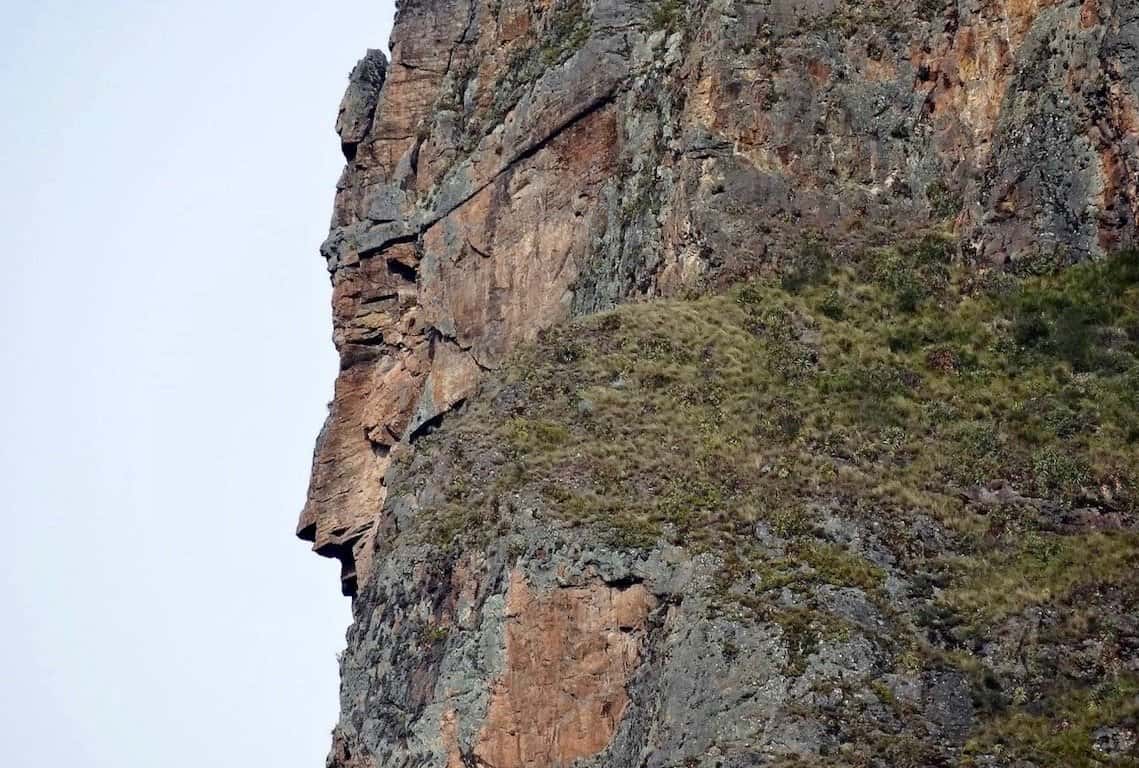
Profile of an Inca Warrior Face on Pinkuylluna Mountain / Cusco to Ollantaytambo: 15 Things to See
Explore the Sacred Symbol of Chakana - The Andean Cross - in Ollantaytambo's Ruins
As you wander through the ancient ruins of Ollantaytambo, keep an eye out for the sacred symbol known as Chakana, the Andean Cross. This prominent feature holds deep cultural and spiritual significance and offers a fascinating glimpse into the Inca worldview.
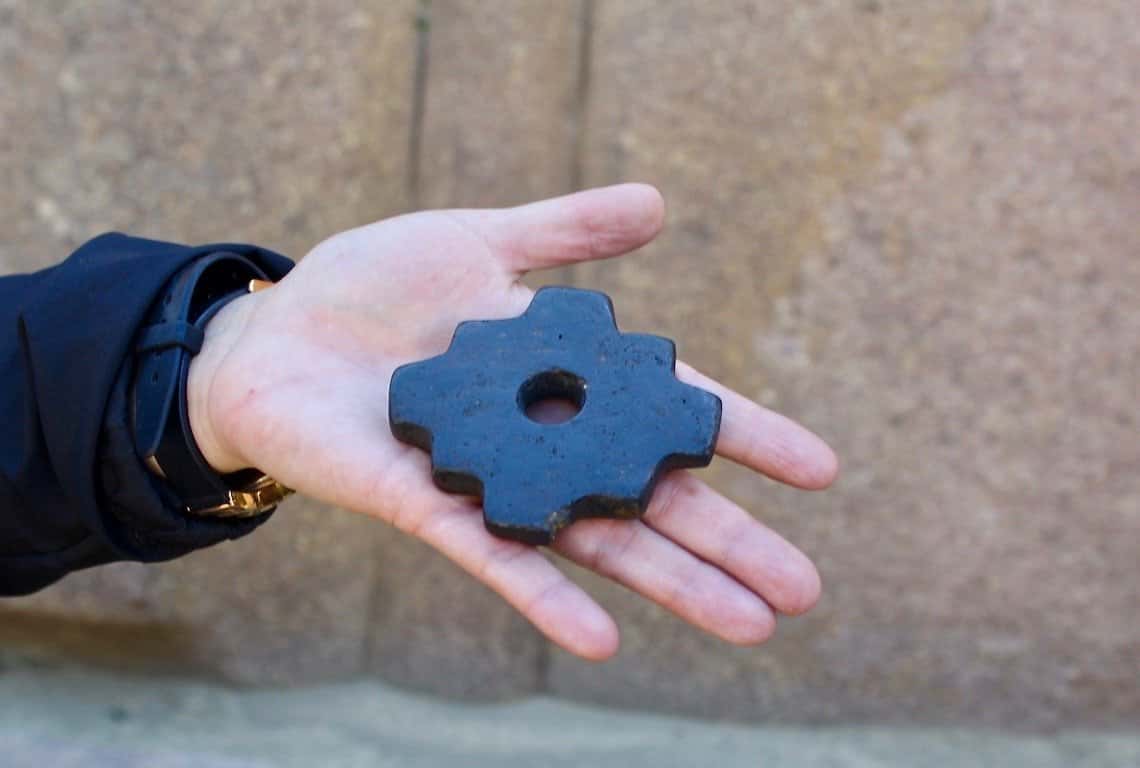
Chakana Symbol / Cusco to Ollantaytambo: 15 Things to See
The Chakana is a cross-like symbol with a square at its center, representing the concept of the cosmos and the Inca’s connection to the natural and spiritual realms. It embodies the harmony and balance between the three worlds of the Inca belief system: the upper world (Hanan Pacha), the middle world (Kay Pacha), and the lower world (Ukhu Pacha).
Throughout the ruins of Ollantaytambo, you will find depictions of the Chakana carved into stone walls, gateways, and architectural elements. It serves as a reminder of the Inca’s reverence for the natural world and their cosmic understanding of existence.
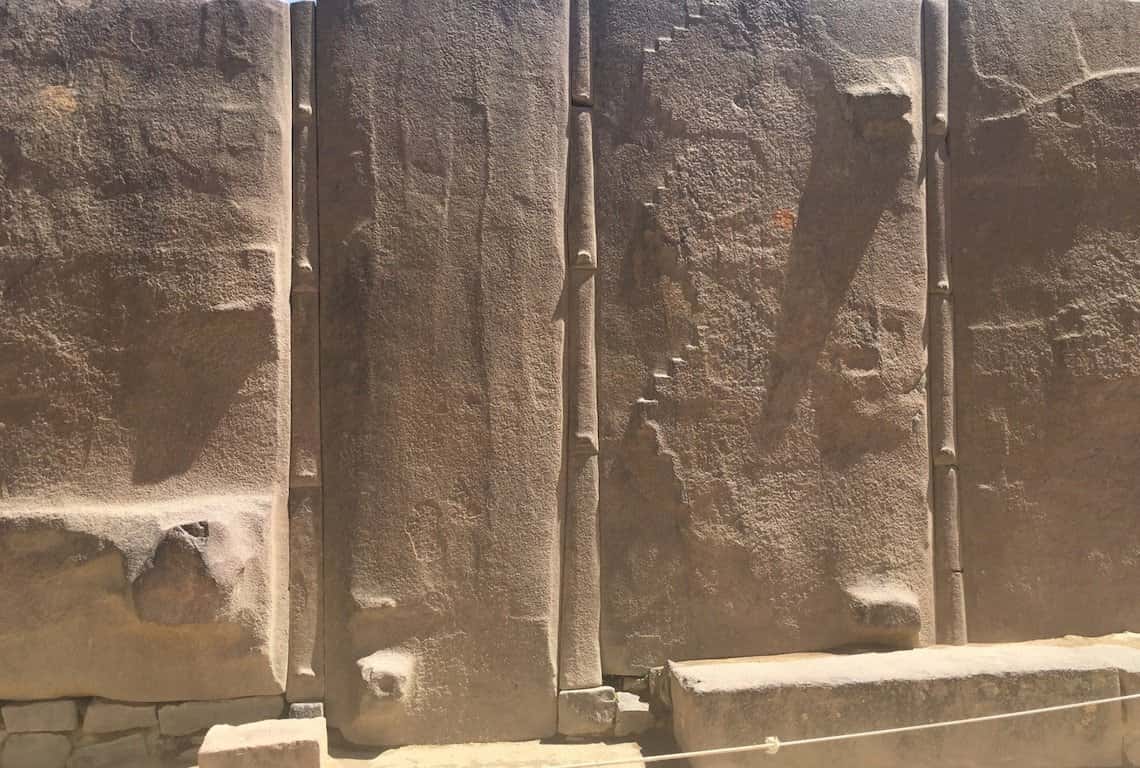
Chakana Symbol / Cusco to Ollantaytambo: 15 Things to See
Unveil the Meaning of the Name Ollantaytambo
The name “Ollantaytambo” has its roots in the Quechua language, which was the language of the Inca civilization. The name is a combination of two words: “Ollantay” and “Tambo.”
- Legend has it that the village was named after a warrior named Ollanta. Ollanta’s family ruled the area during the Inca times. They were related by blood to the royal Inca line. Unfortunately, they were not full-blooded Incas themselves.
- Ollanta fell in love with the daughter of the Sapa (high) Inca of the time.
- Although, Ollanta was a noble, however not a “true”, full-blooded Inca, then as a result the love affair was forbidden.
- It was not until Ollanta saved one of the royal sons of the Sapa Inca from the Chanka people of the Apurimac region near Cusco, that his heroic deed gave Ollanta not only the hand of the daughter of the Sapa Inca but also resulted in the area being named after him.
- The word “Tambo” refers to a resting place or a traveler’s lodge along the Inca road system. These tambo sites provided accommodation, food, and other services for travelers and military personnel. Ollantaytambo served as an important tambo along the road connecting the Sacred Valley to Machu Picchu.
- Combining these two words, “Ollantaytambo” can be translated as “the tambo of Ollantay” or “the resting place of Ollantay.” The name reflects the historical significance of the site and its association with the legendary figure Ollantay.
Intrepid Scout's Tips for Visiting Ollantaytambo
- Arrive early in the morning to beat the crowds and have a more peaceful and immersive experience at the site. Ollantaytambo is a popular destination, so getting there early allows you to explore with fewer people around.
- Give yourself extra time when planning your visit to Ollantaytambo. The ruins of Ollantaytambo sit at an altitude of 2,792 meters. You will feel breathless while climbing the terraces.
- Make sure you have Cusco Tourist Ticket or Boleto Turistico. Check out my post and find out which option and price are right for you.
- Wear comfortable clothing suitable for walking and climbing stairs. The terrain at Ollantaytambo can be uneven, so wear sturdy and comfortable shoes or hiking boots to navigate the site with ease.
- Bring a water bottle and stay hydrated throughout your visit. It is important to drink plenty of water, especially at high altitudes.
- Ollantaytambo can be quite sunny, so wear sunscreen, a hat, and sunglasses to protect yourself from the sun’s rays. Consider wearing lightweight, long-sleeved shirt for additional protection.
- Consider hiring a local guide to enhance your experience. They can provide fascinating insights, historical context, and stories about the site, making your visit even more enriching.
- Think about joining a guided tour to take the stress out of figuring out transportation details. Here are a couple of tours worth checking out:
Pisac Inca Town, Artisan Market, and Ollantaytambo Full-Day Tour from Cusco
This is a full-day tour to the Sacred Valley, Pisac, and Ollantaytambo from Cusco. You will visit the local market in the picturesque town of Pisac, and enjoy a guided tour of Ollantaytambo and the Temple of the Sun Guide. Guide, lunch, and round-trip hotel transfers are included.
The Ultimate Sacred Valley tour: 1 day of Inca history, lifestyle, landscapes
This comprehensive full-day excursion is ideal for travelers with limited time in the region. Alongside a small group and local guide, visit Maras, Moray, Pisac, and Ollantaytambo in an unconventional order to avoid other tour groups and enjoy a more intimate experience.
You Might Also Like:
BEST TIME to VISIT MACHU PICCHU (Top #1 Month for Ultimate Adventure)
Best SELF-GUIDED MACHU PICCHU TOUR (Explore 11 Marvels of Inca Citadel)
How to See the Mesmerizing SUNRISE at MACHU PICCHU (9 Steps to Witness the Magic)
9 Best PHOTOGRAPHY LOCATIONS at MACHU PICCHU (+Useful Photo Tips)
9 Top THINGS to DO at MACHU PICCHU (Unveiling the Enchanted City of the Incas)
How to Reach Machu Picchu Without Hiking (2 Easy Steps!)
Hiking to MACHU PICCHU from AGUAS CALIENTES in 4 Easy Steps
7 Fun and Cool THINGS to DO in AGUAS CALIENTES (Besides Machu Picchu)
Cusco to Maras Salt Mines: 6 Things to Discover in Sacred Valley’s Natural Wonder
What to Pack for Peru: 14 Detailed Essentials for an Adventure-Filled Exploration
Did You Find This Useful?
Why Not Save Cusco to Ollantaytambo to Your Pinterest Board!
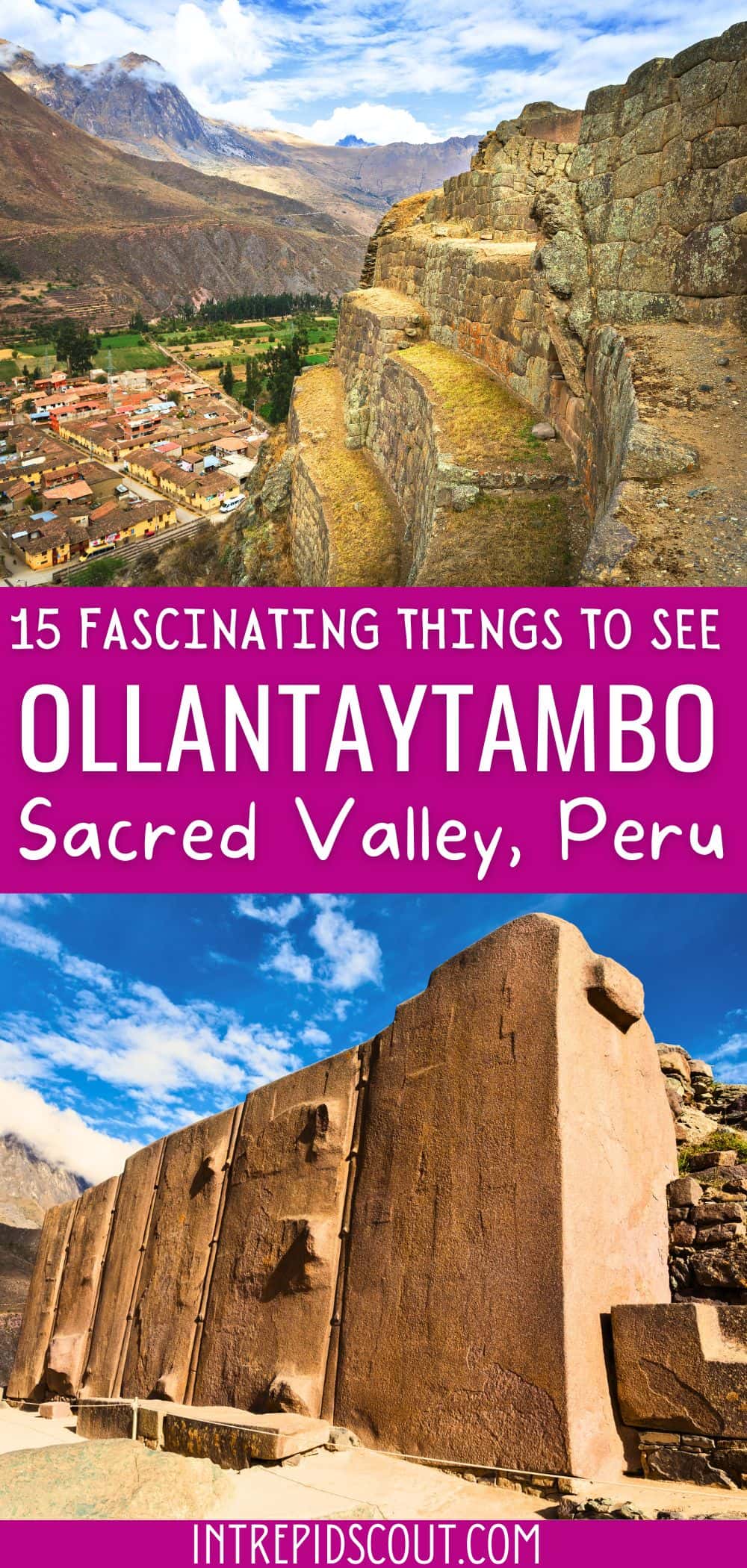
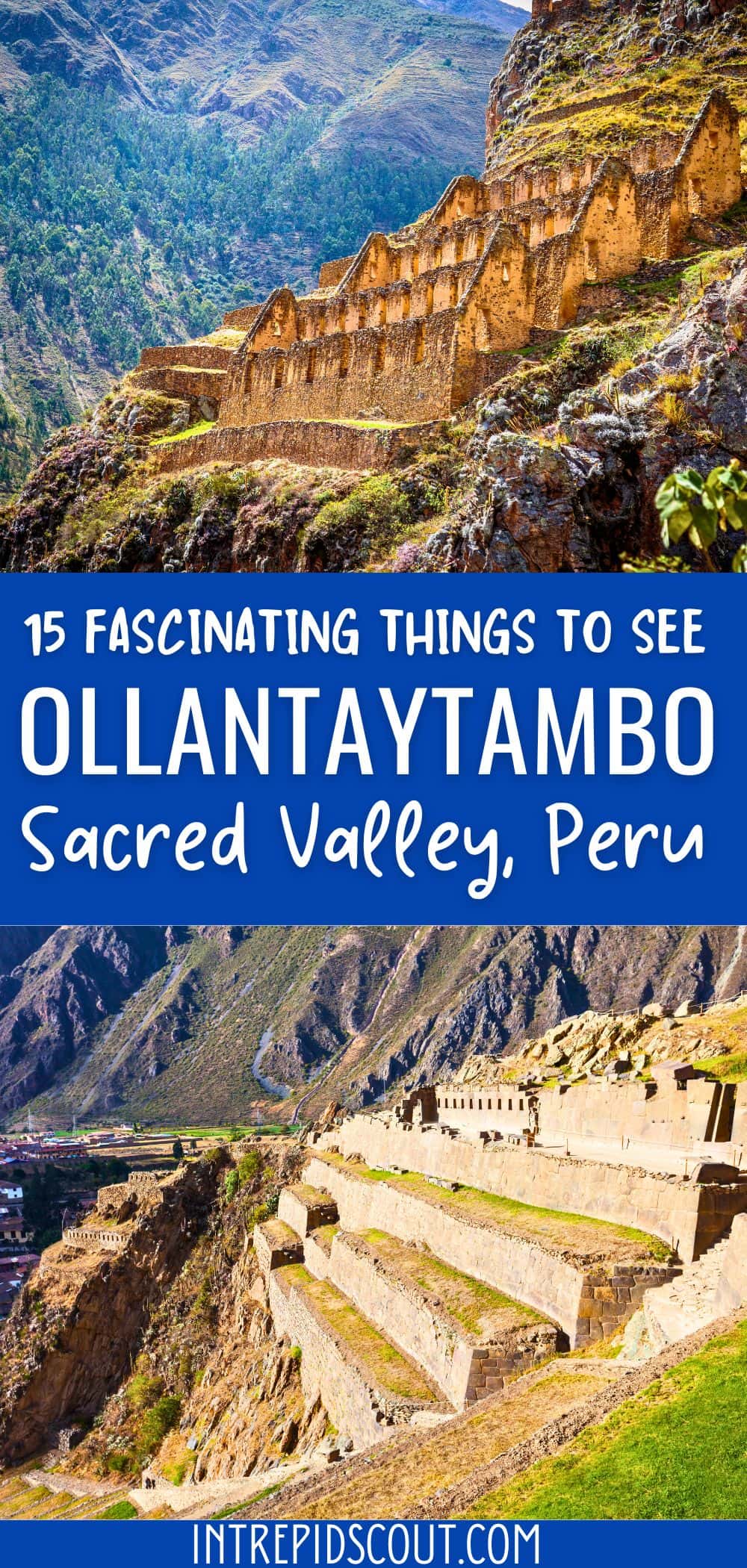
Now, It Is Your Turn, I Would Like to Hear Back from You!
Are you planning a trip to Peru?
Please let me know! Drop me a quick comment right below!
Click on any of the images below to get inspired and to help you with the planning process for your trip to Peru!
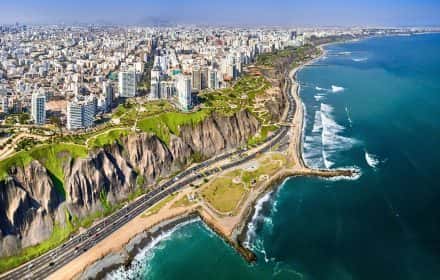
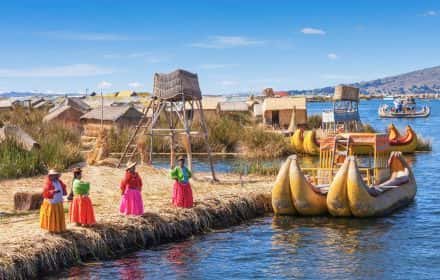
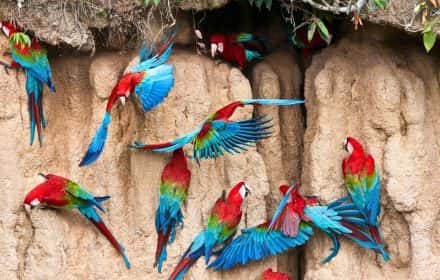
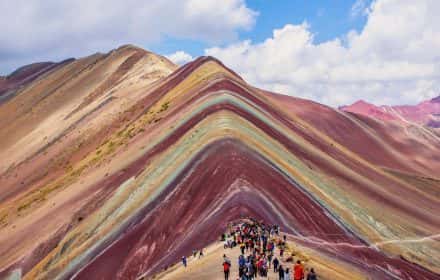
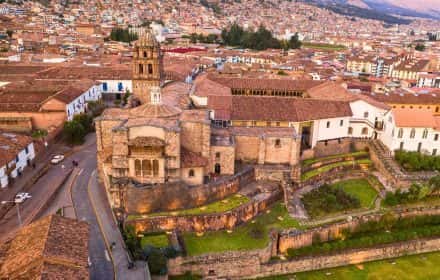
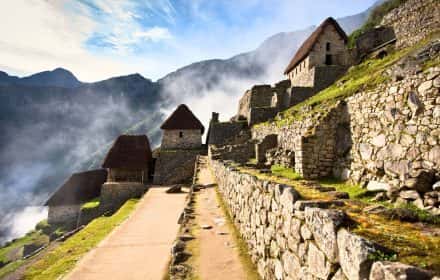
Comments:
6 thoughts on “Cusco to Ollantaytambo: 15 Fascinating Things to Discover at Peru’s Ancient Fortress”
I’d fancy myself some colonia de ruda. Should have explained what the smell felt like. Was transported to the place with your description and felt was seeing the Llama shape on the mountain like I was actually there!
Even I wonder sometimes as to how did such giant pieces of rock find such perfect alignment?
The view from the terraces was worth the bit of breathing problem you were facing due to the height I guess. How did you feel at the end of it?
Hi Vaibhav,
Just curious if you are familiar with colonia de ruda? I tried looking for it on Amazon. I found it and I am going to buy it. I struggle with giving a good description of the scent. It refreshing and clean.
The hike left me breathless several times. Yet, it was totally worth it.
Thank you for your comment!
Good luck with your travels!
This is on my bucket list. Loved this post ?
Hi Lucy,
There are many amazing places in Peru besides Machu Picchu. Ollantaytambo is definitely one of them.
I am glad you liked the post! Thank you for your comment.
Thank you so much!
Did you find it useful?